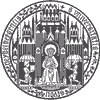WRHP Taxon No. 1682
Dyckia estevesii Rauh (Bromeliaceae) 
| Protologue | Journal of the Bromeliad Society 37: 120–122, fig. 14–15.
Re-published 1987 in: Tropische und subtropische Pflanzenwelt 60: 918–923, fig. 9–11. (Bromelienstudien I., 19. Mitteilung: 16–21)
published 1987 
Protologue has been verified. | Typus
| HT: HEID Rauh 67420 = Esteves Nr. 3 [sub No. accessionis 602151 ... 602159 & in spiritu 204656]
| | Typification according to protologue | Holotypus: E. Esteves Pereira s.n. (B.G.H. 67 420), in herb. inst. bot. system. univ. heidelb. (HEID), Sept. 1985.
[English version:]
Holotype: E. Esteves Pereira s.n. (B.G.H. 67 420), in Herb. Inst. System. Bot. Univ. Heidelberg (HEID), Sept. 1985
[Bromelienstudien I.:]
Holotypus: B.G.H. 67 420, coll. E. Esteves Pereira (Sept. 1985) o. Nr., im Herb. Inst. System. Bot. Univ. Heidelberg (HEID). | | Locus classicus according to protologue | Patria et distributio: Terricola in sylvis siccis inter villam Caiaponia et flumen Rio Araguaia (500 m), Estado de Goias, Brasilia.
[English version:]
Locality and distribution: Terrestrial in a deciduous forest between the town of Caiaponia and the Rio Aguaia, Goias, Brrazil.
[Bromelienstudien I.:]
Heimat und Verbreitung: Terrestrisch in einem Trockental zwischen der Stadt Caiaponia und dem Rio Arguaia, Estado de Goias, Brasilien. | | Comments | In the first paragraph of the protologue Rauh cites as locality: «in a xerophytic bush between the town of Caiaponia and the Rio Araguaia, in the state of Goias, Brazil.»
According to HEIDRAUHFDB074_044 Rauh received the type plant on 1986-04-28 when he visited Eddie Esteves Pereira and his collection in Goiana (Estd. Goias, Brazil). [CNS 2016-10-27] |
Names of taxon in WRHP database |
Dyckia estevesii Rauh (Bromeliaceae)
|
Search database for gatherings of Taxon 1682
N.B.: There may be more gatherings of this taxon than listed when clicking the link. Not all fieldbook entries have been linked to a taxon.
As Protologue is considered what is noted in ICN Articel 8, Recommendation 8A.4, Footnote 3.
The Werner Rauh Heritage Project was funded by

|



